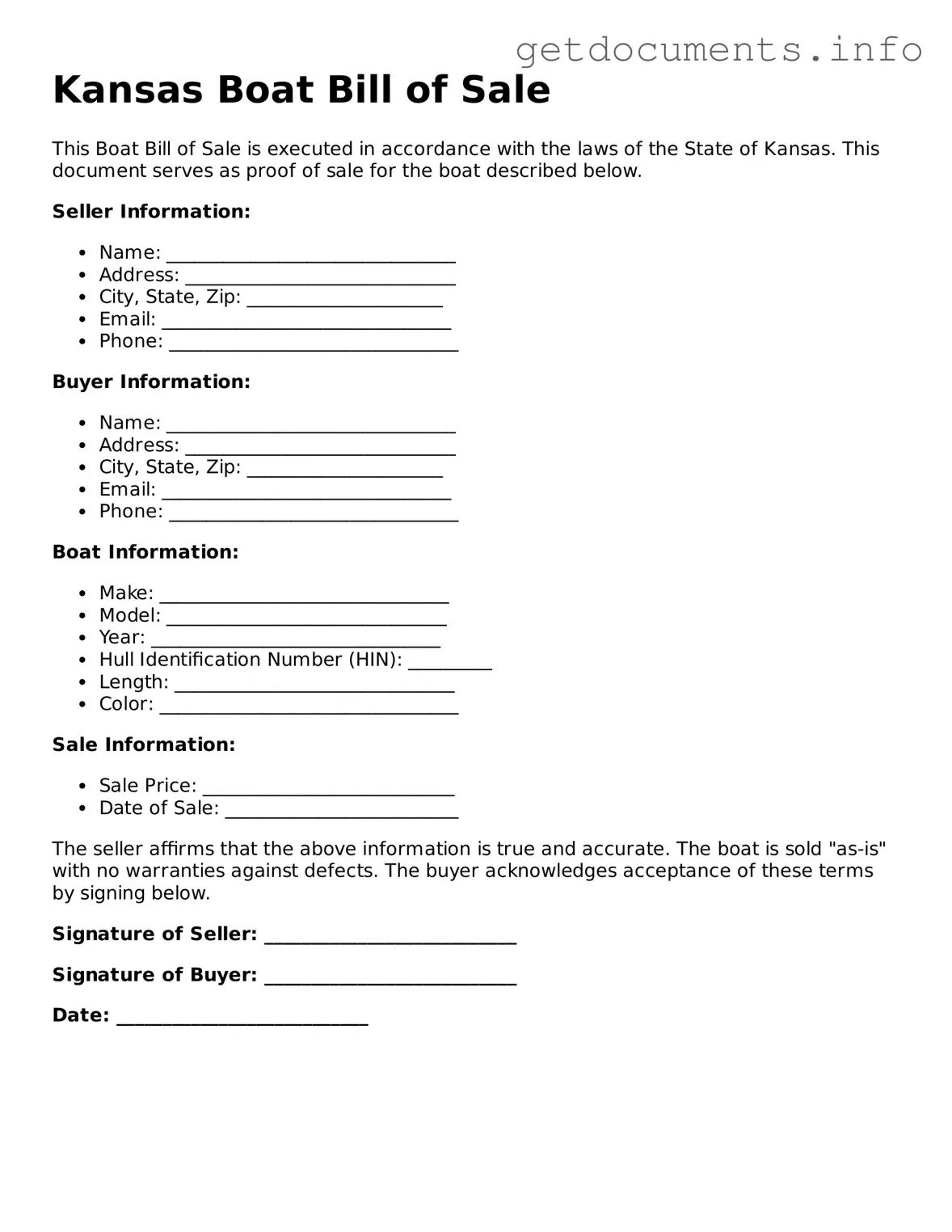Free Boat Bill of Sale Template for Kansas
The Kansas Boat Bill of Sale form is a legal document used to transfer ownership of a boat from one party to another in the state of Kansas. This form provides essential details about the transaction, including the buyer and seller's information, boat specifications, and sale price. Completing this form is a crucial step in ensuring a smooth and legally recognized transfer of ownership.
To fill out the form, click the button below.
Access Boat Bill of Sale Editor
